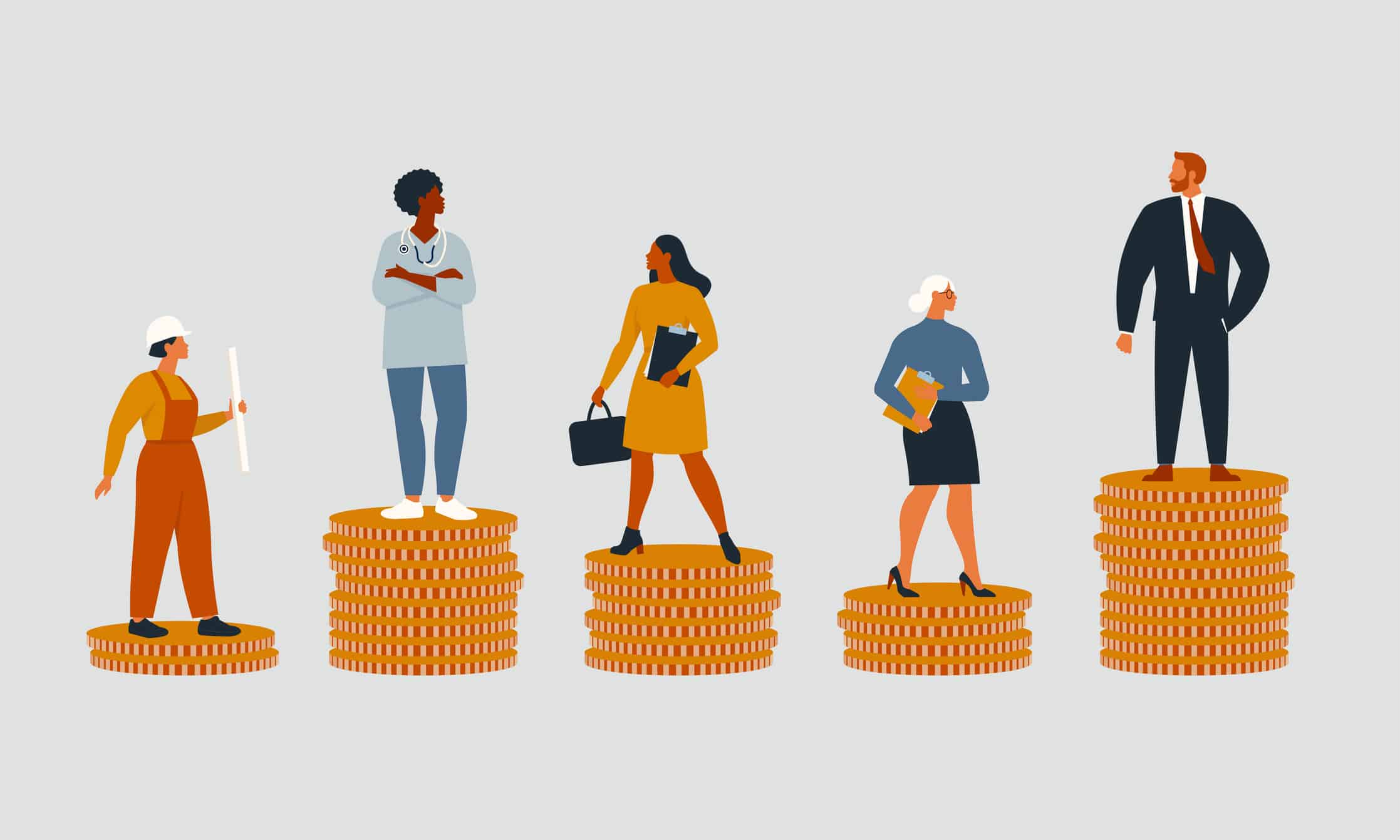In an age of innovation where artificial intelligence meets self-driving cars, we haven’t fixed the one issue that significantly hinders our societal progress: the gender wage gap.
When pay equity is overlooked, it perpetuates discrimination and financial hardships for women+. This disparity creates a space where talented people are undervalued and underpaid, making it almost impossible for women+ to fully contribute and reach their potential.
An ongoing argument used to dismiss the gender wage gap revolves around the claim that women earn less due to job choice, experience, or skill set disparities. While it’s true that certain industries and roles have pay disparities, this explanation overlooks the systemic biases women encounter throughout their careers.
Women in full-time roles earn, on average, 84 cents for every dollar earned by their male counterparts.
Women of color face an even wider wage gap, with Black women earning 64 cents and Latinx women earning 54 cents for every dollar earned by White men.
A 2020 report showed that women in executive positions earn just 75 cents for every dollar earned by male executives.
The wage gap reinforces gender-based discrimination. When women+ are consistently paid less than men for equal work, it sends a message that their contributions are undervalued and diminishes their economic standing.
Women are more likely to struggle with financial security and face limited opportunities for personal and professional growth. Lower wages impact how much a person can save, their retirement security, and their overall financial stress. These factors further trickle down to how much women+ can invest in education, career advancement, and entrepreneurial opportunities.
Pay equity is a part of the larger fight for social justice. Addressing historical and systemic gender biases sends a powerful message that all individuals, regardless of gender, deserve equal recognition, respect, and opportunities.
The gender pay gap continues to promote inequity in the workplace regardless of experience or skill. Before we unveil the next social media app or life-changing tech product, we must figure out how to pay our employees what they deserve and mitigate those biases that make us think women+ deserve less.
By working toward pay equity, we can create fairer and more inclusive workspaces where people can succeed and grow based on their skills, qualifications, and merit, rather than their gender.
If you’re looking for ways to promote pay equity in your workplace, here’s what we can do:
Transparency and Pay Audits: Ensure transparency in pay structures and conduct regular audits to identify and rectify any existing disparities.
Equal Pay Policies: Implement clear and fair compensation policies that promote pay equity, regardless of gender, race, or other factors.
Negotiation Support: Provide resources and support for women+ in negotiating salaries and benefits, empowering them to confidently advocate for fair compensation.
Training and Awareness: Foster a culture of inclusivity through DEI training programs that address unconscious bias and promote equitable practices at all levels of your organization.
Equal Pay Day 2023 Calendar by AAUW
Each day symbolizes how far into the year women in these different cultural groups have to work to earn what men earned in the previous year. These dates change each year based on the current pay gap.
Equal Pay Day—representing all women—is March 14. Women working full-time, year-round are paid 84 cents and all earners (including part-time and seasonal) are paid 77 cents for every dollar paid to men.
Asian American, Native Hawaiian and Pacific Islander Women’s Equal Pay Day is April 5. Asian American, Native Hawaiian and Pacific Islander women working full-time, year-round are paid 92 cents and all earners (including part-time and seasonal) are paid 80 cents for every dollar paid to non-Hispanic white men.
LGBTQIA+ Equal Pay Awareness Day is June 15. Without enough data to make calculations, this day raises awareness about the wage gap experienced by LGBTQIA+ folks.
Black Women’s Equal Pay Day is July 27. Black women working full-time, year-round are paid 67 cents and all earners (including part-time and seasonal) are paid 64 cents for every dollar paid to non-Hispanic white men.
Moms’ Equal Pay Day is August 15. Moms working full-time, year-round are paid 74 cents and all earners (including part-time and seasonal) are paid 62 cents for every dollar paid to dads.
Latina’s Equal Pay Day is October 5. Latinas women working full-time, year-round are paid 57 cents and all earners (including part-time and seasonal) are paid 54 cents for every dollar paid to non-Hispanic white men.
Native Women’s Equal Pay Day is November 30. Native women working full-time, year-round are paid 57 cents and all earners (including part-time and seasonal) are paid 51 cents for every dollar paid to non-Hispanic white men.
Equal Pay Day 2024 is scheduled for March 15.
